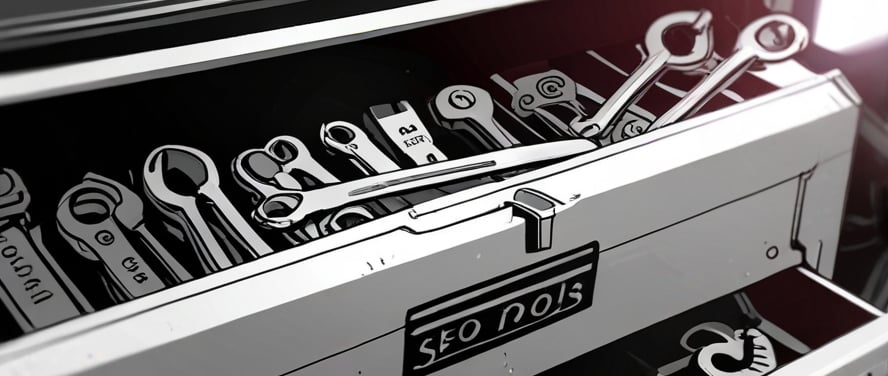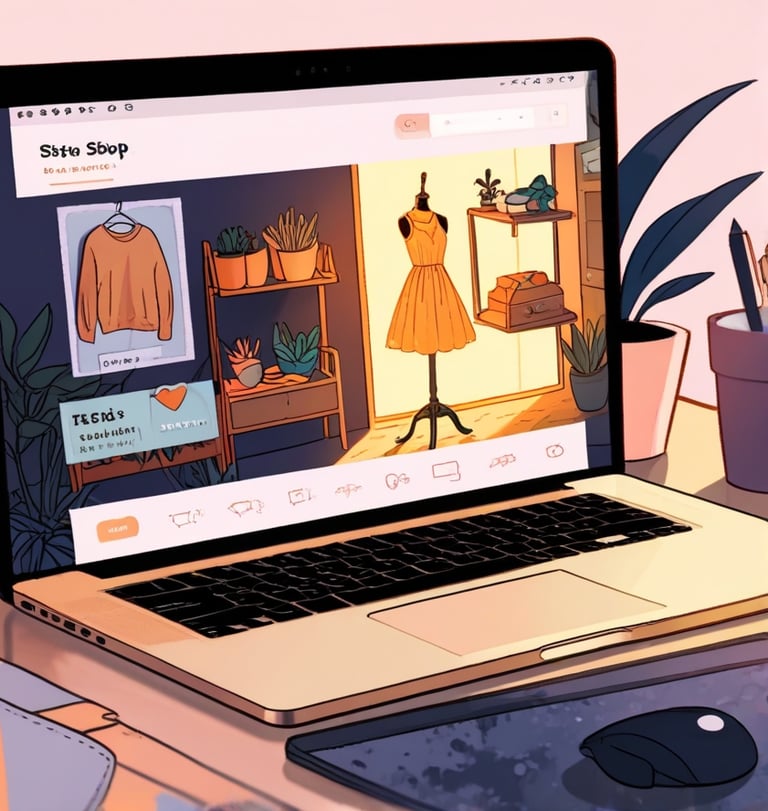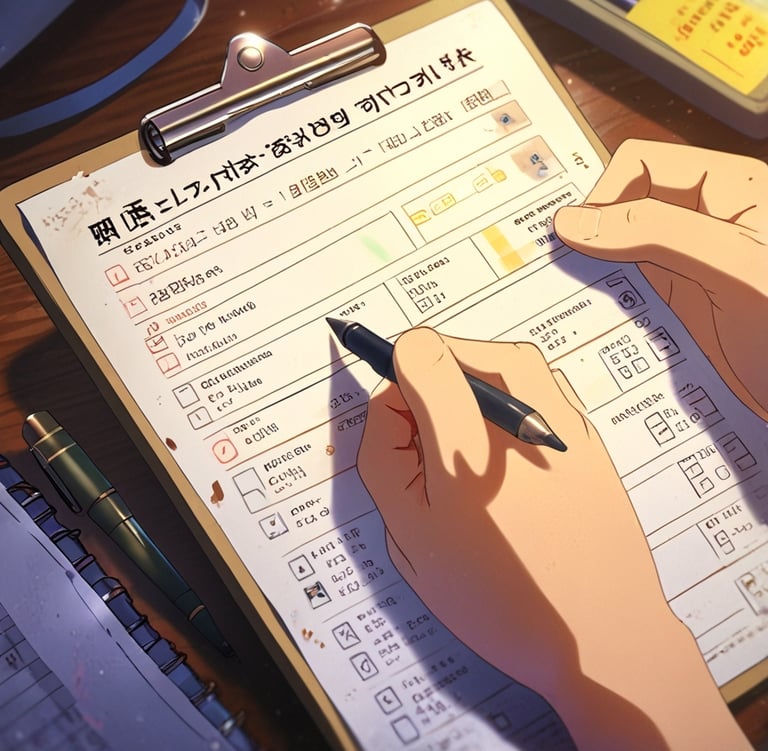The Beginner’s Guide to SEO for Blogs, Etsy, Print-on-Demand, and YouTube


Heads up: a few links are affiliate links, and some include special offers you won’t want to miss.
So, you’ve got a product, a blog, or maybe a whole YouTube channel idea brewing — awesome. But here’s the big question:
How do people find you online?
Enter SEO (aka Search Engine Optimization).
Think of SEO as your way of telling search engines (like Google, Etsy, or YouTube):
“Hey! My stuff is valuable, and here’s why it matters.”
Done right, SEO brings in traffic organically — that means no ads, just more eyeballs, clicks, and potential sales. 💰
And yes, each platform has its own quirks — but don’t worry. The core idea is the same:
👉 Use the words your audience is already searching for
👉 Place them in smart spots (titles, tags, descriptions)
👉 Make your content helpful, readable, and easy to navigate
Let’s break it down by platform. 👇


🌐 SEO for Blogs and Websites
This is classic Google SEO — still the backbone of organic traffic.
Here’s how to win at it:
🔍 Start with Keyword Research
Ask yourself: What would someone actually type into Google to find this post?
Let’s say you’re writing about pasta. Start with “easy pasta recipes” — then dig deeper:
Use Google autocomplete (just start typing and see what comes up)
Check related searches at the bottom of the results page
Use free tools like Ubersuggest or Keyword Planner for deeper insights
Find those real terms people are searching for — especially long-tail keywords (e.g., “quick pasta dinners under 30 minutes”).
🧠 Step 2: Craft Compelling Titles & Headings
Use your main keyword in the title — but make it catchy too.
For example:
Instead of: “Pasta Recipes”
Try: “5 Easy Pasta Recipes You Can Make in 20 Minutes (Even If You’re Tired)”
Break up your content using headings (H2s, H3s, etc.). These help readers navigate and signal to Google what your sections are about.
✨ Step 3: Write for People and the Algorithm
Yes, include keywords — but naturally.
Keep paragraphs short (3–5 lines), use bullet points, and speak directly to the reader. Google rewards helpful, well-structured, easy-to-read content.
And don’t forget:
Add internal links to related blog posts
Include a few reputable external links (this builds trust)
Make your content actually valuable — no fluff, no stuffing
🖼️ Step 4: Optimize Your Images
Fast sites = happy users = better rankings.
Compress your images (so they load quickly)
Rename your files with relevant names (like easy-vegan-pasta.jpg instead of IMG4023.jpg)
Add alt text that describes the image clearly — this also helps with accessibility
📱 Step 5: Make It Mobile and Speed-Friendly
Most users are browsing on their phones — and Google knows it.
Make sure your site:
Loads fast
Looks great on mobile
Has a clean, simple structure
If you’re using a host like Hostinger or a good-quality theme, you’re likely already off to a good start.


🛍️ SEO for Etsy
Etsy has its own algorithm, and it’s pretty straightforward:
Phase 1: Match the search (Do your keywords match the search?)
Phase 2: Rank the best results (How good is your listing compared to others?)
Here’s how to boost your chances:
Use keywords in your:
Title
All 13 tags
Categories and attributes
🔑 Use All 13 Tags — and Make Them Specific
For example, instead of just “bracelet,” try:
👉 “Dainty Rose Gold Name Bracelet”
👉 “Custom Birthstone Bracelet for Bridesmaids”
Use synonyms, regional spellings (e.g. “jewellery” vs. “jewelry”), and variations.
Don’t just write “journal.” Use long-tail keywords like “vegan leather travel journal” or “rustic refillable notebook.”
🗂️ Choose Accurate Categories & Attributes
The more specific you are, the better Etsy can match you with a buyer.
Etsy treats these like extra tags.
Choose the most accurate subcategory and fill out every relevant attribute (color, style, material, etc.). This helps Etsy better understand your product and match it to more searches.
📝 Titles That Speak to Humans AND the Algorithm
While titles and tags matter most, Etsy does scan descriptions. So sprinkle your keywords in (without making it awkward).
Pro tip: Describe your item in the way your customer would talk about it.
Put the important keywords at the beginning, but keep it natural.
Example: “Handmade Ceramic Coffee Mug – Matte Black – 12oz” beats “Coffee Mug Handmade” any day.
📸 Use Quality Photos (and Lots of Them)
Shoppers don’t touch — they scroll. So give them crisp, clear photos from every angle. This also boosts click-through and conversion rates.
Use clear, well-lit images from multiple angles. Show the product being used if you can. And don’t forget:
Use alt text when possible (on your own site or if Etsy introduces the feature)
Name your image files descriptively
⭐ Shop Reputation Matters
Etsy boosts listings from trustworthy sellers.
So:
Encourage reviews
Respond to messages quickly
Keep processing/shipping times accurate
More engagement = more love from the algorithm.
Fast replies + good reviews = better visibility.
Etsy rewards great customer service with better ranking.
👕 SEO for Print-On-Demand (Redbubble, Teespring, etc.)
POD marketplaces work just like Etsy: match first, then rank.
🖋️ Start With a Strong Title
Use descriptive, search-friendly language.
Example: “Funny Golden Retriever Dog Dad Hoodie” beats just “Dog Hoodie.”
These help you stand out in crowded categories.
Instead of:
“Cat Shirt”
Try:
“Funny Cat Shirt for Plant Moms”
“Retro 90s Aesthetic Cat Lover Tee”
The more specific you are, the better chance you have to get found.
🏷️ Fill Out All Tags — and Get Creative
Think synonyms, plurals, niche phrases. Instead of “space shirt,” try “vintage astronaut graphic tee” or “retro galaxy vibe shirt.”
Platforms like Redbubble allow many tags — so fill them in.
Use:
Multi-word phrases
Synonyms and variations
🧠 Think Niche
Go specific to stand out in a crowded marketplace.
Instead of “cat shirt,” go for “funny black cat Halloween shirt” or “retro cat lover tee.”
Related themes (e.g. “cottagecore,” “witchy,” “minimalist”)
📝 Write a Real Description
Don’t just throw in keywords — explain the design, who it’s for, and why it’s cool.
Good copy helps with SEO.
Think: What would make you click “add to cart”?
🎨 High-Quality Mockups Win
On these platforms, the image is the product. Make it count.
Upload sharp, compelling visuals — they matter more than alt text on Redbubble or Teespring.


🎥 SEO for YouTube
YouTube’s algorithm loves two things:
1. Relevance
2. Watch time
Let’s boost both:
🔍 Keyword Research with YouTube’s Autocomplete
Type your topic into the YouTube search bar and watch the autocomplete suggestions.
For example:
Typing “how to watercolor” might bring up:
“how to watercolor flowers”
“how to watercolor for beginners”
“how to watercolor a galaxy”
Each suggestion = a video idea with real demand.
📛 Title + Description = Prime Real Estate
Put your keyword near the front of your title. Repeat it naturally in the first sentence of your description.
Example: “Easy Vegan Dinner Recipe | 20-Minute Weeknight Meals”
🏷️ Add Smart Tags (And Don’t Forget Metadata)
Tags help YouTube categorize your video. Include both broad (“vegan dinner”) and specific (“vegan chickpea curry”).
🖼️ Create Custom Thumbnails
Yes, they matter a lot. Bold visuals and readable text on your thumbnail can make or break your click-through rate.
⏱️ Boost Watch Time and Engagement
Ask questions. Invite comments. Say “Like and subscribe!” early.
The longer people watch and engage, the more YouTube promotes your content.
📝 Upload Captions or Transcripts
Closed captions = more keywords, better accessibility, and bonus SEO points.
Subscribe to our newsletter


Enjoy exclusive special deals available only to our subscribers.


Putting It All Together 🌍
No matter the platform — blog, Etsy, POD, or YouTube — SEO is about one thing:
Helping the right people find your content at the right time.
To make that happen:
✨ Start with keyword research
✨ Use those keywords smartly (not spammy!)
✨ Create quality content that’s easy to read or watch
✨ Add helpful structure: headings, tags, images, thumbnails
✨ Track what’s working and tweak as you go
Great SEO isn’t about gaming the system — it’s about clarity, consistency, and genuinely helping your audience. And once you get the hang of it, it becomes second nature. 🙌






Business Calculator
View Our handy business calculators! While we make more...


This blog made everything about passive income so much easier to grasp. The way it’s written is super clear and beginner-friendly.
Clarice Turner

I’ve always heard about passive income, but I never really understood how it worked—until I read this blog.
Brian Moten

